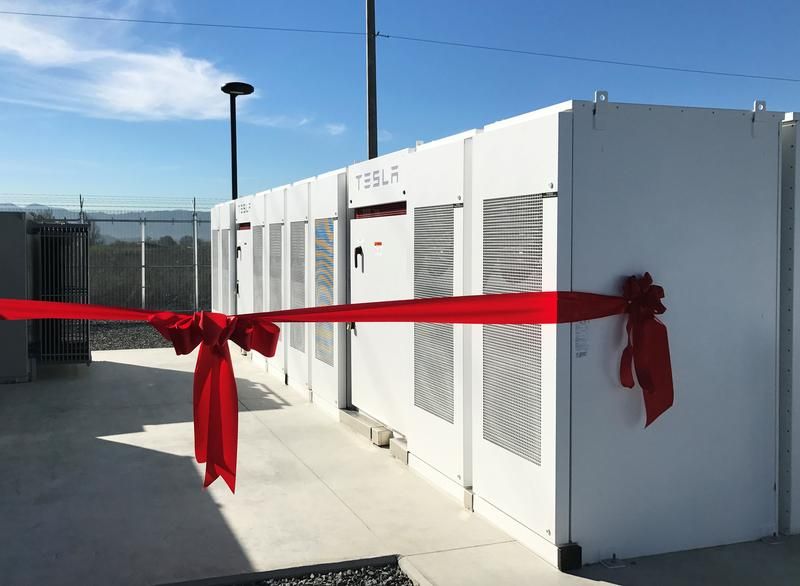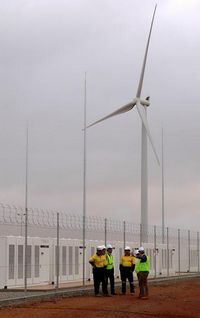California is preparing a massive energy storage procurement. The state is creating an economic framework for storage that may set a precedent nationwide. By Alison Healey.
As the nation’s most populated state and the one with the most progressive renewables goals, California has long been used as a model for individual states’ progression to a cleaner power grid. The integration of an unprecedented amount of energy storage is the next frontier and the California Independent System Operator (CAISO) is exploring market-significant reforms in preparation.
According to a May presentation from the California Independent System Operator (CAISO) and California Public Utilities Commission (CPUC), the agencies are calling for procurement of 3.3GW of additional resource adequacy (RA) resources by 2023 to make up for gas retirements. A 1GW tender for long-duration energy storage may be launched as soon this month, according to Recharge News.
Most of the resources in the interconnection queue for RA requirements are energy storage in the form of lithium-ion four-hour batteries, CAISO said. There will be hundreds of megawatts of interconnected storage capacity this year, and several thousand megawatts of capacity added in the next few years, CAISO said. These resources will be critical for reliability on the system as gas resources retire, but the markets were designed around gas resources and may not have features that best accommodate the unique attributes of storage.
CAISO launched an initiative earlier this month called Energy Storage Enhancements and is close to finalising a new model that aims to more fully integrate these resources into the market, use their flexibility to maintain grid reliability and maximise their effectiveness to achieve clean energy targets.
The ISO is particularly concerned about storage awarded in the day-ahead market being unavailable for real-time operations. For that reason it is considering a longer real-time look ahead window. It is looking to develop bid enhancements to help resources accurately represent their marginal costs to the real-time market, enhancements to ensure the ISO has sufficient state-of-charge (SOC) to cover critical hours, and modifications to dispatch and bid cost recovery mechanisms. The SOC of a battery specifies the capacity that is available as a function of the rated capacity, varying between 0 and 100%, and is central to the debate over storage rules.
The Energy Storage Enhancements initiative was developed in response to concerns from “the storage community’, CAISO said, in relation to market rules, optimisation algorithms, and settlement processes.
“A principal concern raised by the storage community is a lack of compensation during critical periods when the ISO must retain state of charge on limited energy storage devices, which may preclude their active participation in the real-time markets. The consideration of the charging and discharging cycle of the energy storage is lacking from existing bid-cost-recovery rules, CAISO said, since the rules were designed based on traditional energy generation resources.
Options on the table to better accommodate and incentivise storage include the energy shift model and a biddable stored energy product.
The ISO could develop a new energy shift product that would be unique in its ability to procure energy in the day-ahead market from the storage fleet at a specific strike price. That energy would be used to charge specific storage resources during low priced hours in the day, and then would be discharged during specific high net load hours of the day.
“Storage resources could include lost opportunity costs from not participating in the real-time market into bids for the energy shift product,” CAISO states. “After a storage resource clears for this product, a requirement would be imposed in the real-time market preventing discharge below the cleared load-shift quantity. The ISO could ensure that sufficient energy shift product is procured to ensure that the storage fleet is sufficiently charged to meet hours when storage resources are critical in the market. The ISO may procure additional energy shift product if it is economic to do so.”
For the biddable stored energy option, the ISO “may elect to use day-ahead and real-time market results to infer the total quantity of state of charge that is critically needed to ensure reliability”, the issue paper proposes, then, in both markets, “impose a constraint to ensure that state of charge is available across the storage fleet.” The biddable state of charge product would be bid and priced based on the marginal resource clearing for state of charges specifying total amount of state of charge in MWh. “For each real-time interval, the ISO would ensure that sufficient state of charge is available to meet the target,” CAISO explained.
Two suggested remedies to the disparities have been ruled out: changes to scarcity pricing and expansion of the real-time market.
“Unlike gas resources, the decision to provide energy in the real-time market for a storage resource implies a trade-off between generating now and earning current market revenues or generating later and ensuring day-ahead California ISO market revenues,” the ISO concluded.
“Today the ISO has US$2,000/MWh scarcity prices, which the market clears at infrequently. These prices do offer some incentive for storage resources to have state of charge available to meet day-ahead schedules. However, there are often prices during the peak ramping periods where storage resources may find it profitable to discharge energy for higher real-time profits despite the potential risk of scarcity pricing later in the day and an inability to deliver energy at that time. Currently, the ISO is not planning to increase scarcity prices to a level sufficient to prevent storage unavailability in the real-time market.”
The ISO’s real-time five-minute market looks ahead 65 minutes, while most of the storage resources take several hours to fully charge.
“This short time horizon may cause challenges for ensuring that storage resources are charged when needed,” CAISO said. “It may also create challenges for storage operators that desire to charge during the lowest priced periods and discharge during highest priced periods of the day.” Its issue paper determined, however, that expanding the real-time market “is not technologically feasible with the existing available commercial optimisation tools”.
CAISO has held a public stakeholder web meeting to discuss the issue paper for the initiative. In recent weeks California governor Gavin Newsom’s administration included US$350m of support for pre-commercial long-duration energy storage projects as part of the 2021–2022 May Revision to the Governor’s Budget. Decisions on which new model, if any, will be implemented are expected in early 2022.













